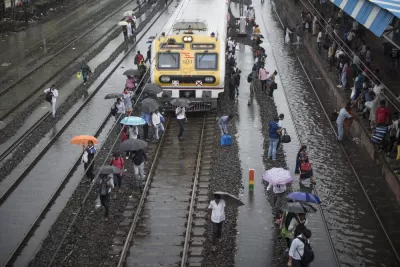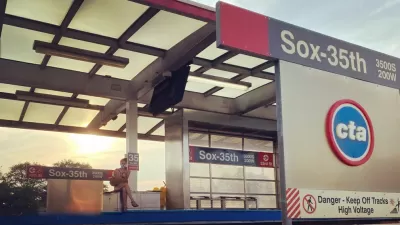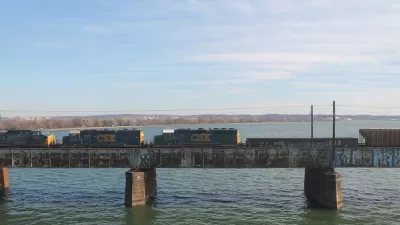A tragic stampede at a Mumbai rail station is putting new focus on the state of rail infrastructure in India.

The BBC reports: "A stampede on a footbridge at a Mumbai railway station has left 22 people dead and injured more than 30, Indian officials report."
The stampede occurred during the morning rush hour on Friday, September 29 at the Prabhadevi station, formerly called Elphinstone Road.
"It was triggered by overcrowding and people seeking shelter from monsoon rains," adds the BBC. "'The incident occurred as heavy rains lashed Mumbai and passengers took refuge on the foot overbridge. People at the front slipped and the huge crowd toppled over, leading to the stampede,' Indian Railways spokesman Ravindra Bhakar told AFP news agency."
Hari Kumar also reports on the tragedy for the New York Times, adding some context of the incredible volumes of traffic that travel on the Mumbai regional rail network: "Every day, about seven and a half million commuters use the sprawling train network in Mumbai and its surrounding suburbs. Nearly 3,000 people die on the network every year, with accidents killing more than 2,100 so far in 2017."
FULL STORY: Mumbai railway station stampede kills 22 amid heavy rain

Montreal Mall to Become 6,000 Housing Units
Place Versailles will be transformed into a mixed-use complex over the next 25 years.

Planetizen Federal Action Tracker
A weekly monitor of how Trump’s orders and actions are impacting planners and planning in America.

DARTSpace Platform Streamlines Dallas TOD Application Process
The Dallas transit agency hopes a shorter permitting timeline will boost transit-oriented development around rail stations.

Study: 4% of Truckers Lack a Valid Commercial License
Over 56% of inspected trucks had other violations.

Chicago Judge Orders Thousands of Accessible Ped Signals
Only 3% of the city's crossing signals are currently accessible to blind pedestrians.

Philadelphia Swaps Car Lanes for Bikeways in Unanimous Vote
The project will transform one of the handful of streets responsible for 80% of the city’s major crashes.
Urban Design for Planners 1: Software Tools
This six-course series explores essential urban design concepts using open source software and equips planners with the tools they need to participate fully in the urban design process.
Planning for Universal Design
Learn the tools for implementing Universal Design in planning regulations.
City of Mt Shasta
City of Camden Redevelopment Agency
City of Astoria
Transportation Research & Education Center (TREC) at Portland State University
US High Speed Rail Association
City of Camden Redevelopment Agency
Municipality of Princeton (NJ)





























